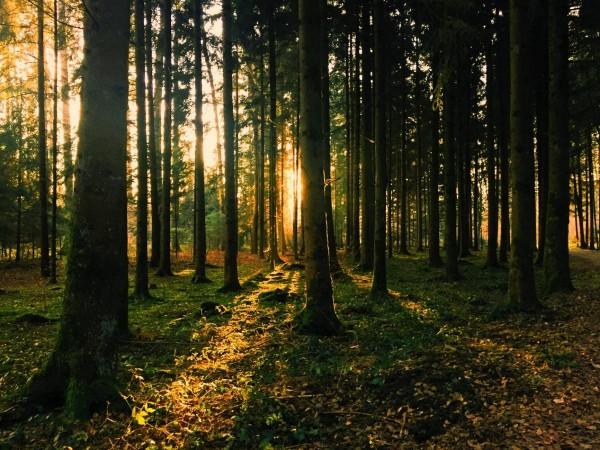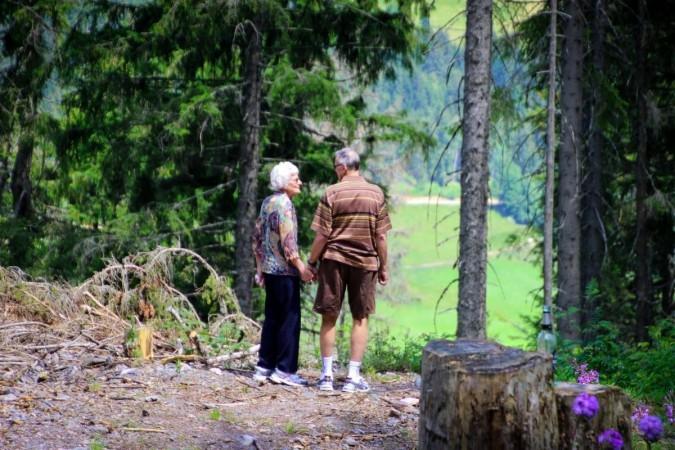Forest is the fountain of youth. "Trees cast off years and grant health and cheer, or so transcendentalist" – Ralph Waldo Emerson claimed in his 1836 essay "Nature." "In the woods," he wrote, "I feel that nothing can befall me [. . .] which nature cannot repair."
Well, truly said. Indeed, studies have shown how trees do really have healing powers. The release of phytoncides – antimicrobial essential oils – that protects trees from germs, have a host of health benefits for people, such as boosting immune system, reducing blood pressure, heart rate, stress, anxiety, improve sleep and creativity, and may even help fight cancer as well as depression.
Taking inspiration from the contemporary concept of 'forest medicine' from Japan, a place where nature has long been celebrated, India, as well, has inaugurated its first forest healing centre, this week, at Kalika near Ranikhet, a hill station in Uttarakhand.
The centre is based on the concept of making people healthy by bringing them close to the nature.

Origins of forest bathing
The Japanese people party when flowers bloom, the moon is bright, and when fireflies multiply. The country's two major religions, Buddhism and Shintoism, consider forests to be some mystical objects. For example, in Shinto religion, the spirits are not separate from nature; instead, they are present in the trees, rocks, breeze, the stream, the waterfall and other natural objects.
In 1982, the Japanese government introduced the concept of 'shinrin yoku', or forest bathing, urging people to make effectively make use of the country's 3,000 wooded miles for therapy. Tomohide Akiyama, then chief of the forestry ministry, had understood intuitively that the woods do people in healing, while distancing from the nature makes us sick.
Meanwhile, as Japan was championing forest healing process, American scientist Edward O. Wilson, during the same period, was formulating a thesis – Biophilia – that explained why nature moves all people, wherever they are from.
Initial studies into the forest therapy began in Japan in 1990 but it wasn't until the new millennium when forest medicine became an official scientific treatment. Japan went on to spend nearly USD 4 million on research behind forest bathing from 2004 to 2012, testing the effects on hundreds of subjects in different contexts and forests.
Most inexpensive health care available to humanity

The healing centre in Ranikhet features signboards at the entrance to advise visitors to hug trees, to walk barefoot on the grass, lie on their back and gaze at swaying trees, or look at the sky above to soothe their senses.
In addition, pretty, little wooden structures, called tree platforms, have also been set up here, to provide natural ambience to the visitors for better meditation.
Spread across an area of around 13 acres, the healing centre has been reportedly developed following a detailed study of revitalising impact of forests on human health by the research wing of Uttarakhand state Forest Department, and by drawing inspiration from the technique of Shinrin-Yoku.
Chief Conservator of Forest Sanjiv Chaturvedi has said that the reason behind establishing the healing centre in a pine dominated forest is the studies which have found that conifers like pine trees emit certain oil compounds, called phytoncides, to defend themselves from various pathogens and microbes.
Further as per research, it has also been found that these compounds help to multiply natural killer cells in our blood, thereby helping the human body to fight infections and enhance overall immunity.
In Japan, you don't have to take a trip to a certified forest to get a dose of forest medicine these days. Trees' benefits are easily transferred to cities and indoor settings—via parks or home plants, where you can see, smell, and touch the healers.

















